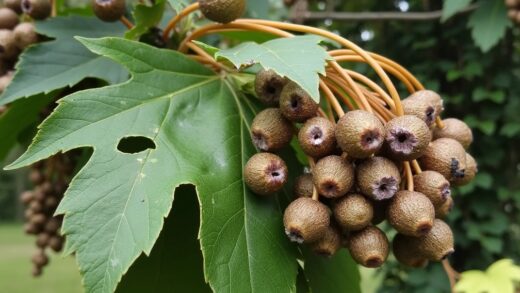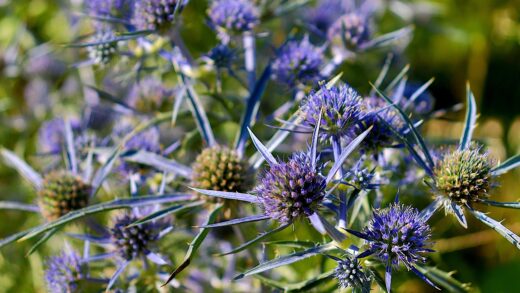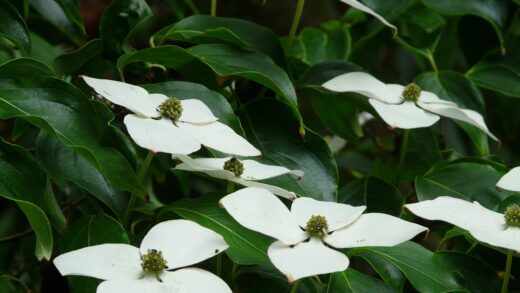Weigela is generally regarded as a robust and resilient shrub, remarkably free from many of the serious disease and pest issues that can plague other ornamental plants. However, no plant is entirely immune, and under certain environmental conditions or stress, weigela can become susceptible to a number of problems. A proactive approach, focused on maintaining plant health through proper care and regular monitoring, is the most effective strategy for preventing these issues. Being able to identify and appropriately respond to the early signs of disease or pest infestation is key to ensuring the long-term vitality of this beautiful garden shrub.
The foundation of disease and pest management is prevention. A healthy, vigorous weigela growing in its preferred conditions—full sun, well-drained soil, and with good air circulation—is inherently more capable of resisting and recovering from attacks. Stress factors such as drought, waterlogged soil, insufficient light, or nutrient deficiencies can weaken the plant’s natural defenses, making it an easier target for opportunistic pathogens and insects. Therefore, all the principles of good cultivation, from proper planting to appropriate watering and fertilization, are also the first line of defense against pests and diseases.
Regular inspection of your weigela allows for the early detection of any potential problems, which is crucial for effective management. When issues are caught early, they can often be resolved with simple, low-impact interventions, preventing them from escalating into more serious threats that might require chemical treatments. This involves examining the leaves, stems, and flowers for any unusual spots, discoloration, distortions, or the presence of insects.
This article provides a comprehensive overview of the most common diseases and pests that can affect weigela. We will cover how to identify them based on their characteristic symptoms and the damage they cause, and discuss a range of management strategies, from cultural and mechanical controls to the judicious use of organic and chemical treatments. With this knowledge, you can protect your weigela and ensure it remains a healthy and beautiful component of your garden landscape.
Common fungal diseases affecting weigela
Although weigela is relatively disease-resistant, it can occasionally be affected by common fungal diseases, particularly when conditions are overly wet or humid. One of the most frequently encountered issues is leaf spot, which is caused by various fungal pathogens. This disease manifests as small, dark spots on the leaves, which may enlarge over time and develop a tan or gray center. While typically not a serious threat to the plant’s overall health, a severe infection can cause premature leaf drop and reduce the plant’s aesthetic appeal.
More articles on this topic
Another fungal disease that can appear, especially in shady, damp locations with poor air circulation, is powdery mildew. This is easily identified by the characteristic white, powdery coating that forms on the surface of the leaves, shoots, and sometimes the flowers. Powdery mildew thrives in humid weather with warm days and cool nights. A heavy infestation can interfere with photosynthesis, stress the plant, and lead to leaf distortion and discoloration.
More serious, though less common, are root rot diseases, caused by soil-borne fungi like Phytophthora. These diseases are almost always a result of a weigela being planted in poorly drained, waterlogged soil. The pathogens attack the root system, causing it to decay. Above-ground symptoms can be deceptive, often mimicking drought stress, and include wilting, yellowing leaves, and branch dieback. By the time these symptoms are obvious, the root damage is often extensive and the plant may be difficult to save.
Botrytis blight, or gray mold, can also affect weigela, especially during prolonged periods of cool, wet weather. This fungus typically attacks weak or damaged tissues, such as old flowers or wounded stems. It appears as a fuzzy, gray-brown mold and can cause flower buds to rot, leaves to spot, and stems to develop cankers. Proper sanitation and timely pruning are key to managing this disease.
Preventative measures against diseases
Prevention is by far the most effective strategy for managing fungal diseases in weigela. The cornerstone of prevention is proper site selection and planting. Choose a location that provides full sun and excellent air circulation, as sunlight and moving air help to keep the foliage dry, making it difficult for fungal spores to germinate. When planting multiple shrubs, ensure they are spaced according to their mature size to avoid overcrowding, which can trap humidity and inhibit airflow.
More articles on this topic
Proper soil management is equally critical, especially for preventing root rot. Weigela must be planted in well-draining soil. If you have heavy clay soil, amend it generously with organic matter like compost to improve its structure and porosity. Avoid planting in low-lying areas where water tends to collect. Planting the shrub with the top of its root ball slightly above the surrounding soil level can also help to promote drainage away from the crown.
Good sanitation practices in the garden play a significant role in reducing the presence of fungal pathogens. In the autumn, rake up and dispose of all fallen leaves and debris from around the base of the weigela. Fungal spores can overwinter in this plant litter, providing a source of infection for the following spring. Additionally, when pruning, always use clean, sharp tools, and disinfect them between cuts, especially if you are removing diseased tissue.
Watering technique is another key preventative measure. Water the weigela at its base using a soaker hose or drip irrigation rather than overhead sprinklers. This delivers water directly to the roots without wetting the foliage. If you must use an overhead method, water early in the morning so the leaves have ample time to dry completely in the sun during the day. Wet foliage, particularly overnight, creates the perfect breeding ground for most fungal diseases.
Identifying and controlling common insect pests
Weigela is not a primary target for most insect pests, but a few common garden insects can occasionally cause problems. Aphids are small, pear-shaped, sap-sucking insects that tend to congregate in clusters on new growth and the undersides of leaves. Their feeding can cause leaves to curl, yellow, and become distorted. Aphids also excrete a sticky substance called honeydew, which can lead to the growth of sooty mold, a black fungus that coats the leaves.
Another pest to watch for is the four-lined plant bug. This insect is identifiable by the four black stripes on its yellowish-green body. It feeds by piercing the leaf tissue and injecting a toxin that kills the surrounding cells, resulting in small, circular, tan or black spots that can eventually drop out, leaving a “shot-hole” appearance. The damage is primarily cosmetic but can be extensive if the pest population is high.
Spider mites, which are technically arachnids rather than insects, can also infest weigela, particularly in hot, dry conditions. These tiny pests are difficult to see with the naked eye but their presence is often indicated by a fine webbing on the plant and leaves that appear stippled with tiny yellow or white dots. A severe infestation can cause leaves to turn yellow or bronze and drop prematurely, weakening the plant.
Control of these pests often begins with the simplest methods. A strong jet of water from a hose can be very effective at dislodging aphids and spider mites from the plant. For more persistent infestations, insecticidal soap or horticultural oil can be used. These products work by smothering the soft-bodied insects and have a low impact on beneficial insects. It is crucial to ensure thorough coverage, especially on the undersides of leaves where pests tend to hide.
Managing infestations of aphids and spider mites
When dealing with an established infestation of aphids on your weigela, several management strategies can be employed. Encouraging natural predators is a highly effective, long-term solution. Ladybugs, lacewings, and hoverflies are all voracious predators of aphids. You can attract these beneficial insects to your garden by planting a diversity of flowering plants, or you can purchase them from commercial suppliers for release near the infested weigela.
For immediate control, insecticidal soap sprays are an excellent option. These products are readily available and are most effective when applied directly to the aphids. They work by disrupting the insect’s cell membranes and are most potent when wet, so thorough coverage is essential. Repeat applications may be necessary every five to seven days to control newly hatched aphids until the population is under control. Always follow the label instructions carefully to avoid damaging the plant.
Managing spider mites requires a similar approach, with a strong focus on environmental control. Since spider mites thrive in hot, dry, and dusty conditions, one of the best preventative and control measures is to regularly spray the foliage of your weigela with water, especially during prolonged dry spells. This increases the local humidity, which spider mites dislike, and physically washes them off the leaves.
If a spider mite population becomes large, horticultural oils or neem oil can be effective treatments. These oils work by suffocating the mites and their eggs. As with insecticidal soaps, complete coverage of all plant surfaces, including the undersides of the leaves, is vital for success. It is best to apply these treatments on a cool, overcast day to prevent the oil from burning the foliage in direct sunlight.
Integrated pest management strategies
An Integrated Pest Management (IPM) approach is the most sustainable and environmentally responsible way to handle diseases and pests on weigela. IPM is a holistic strategy that prioritizes the health of the entire garden ecosystem and uses the least toxic control methods first. It begins with a foundation of cultural controls—the preventative measures discussed earlier, such as proper planting, watering, and sanitation, which are designed to create a healthy plant that is less susceptible to problems.
The next level of IPM involves mechanical and physical controls. This includes actions like hand-picking larger pests, pruning out diseased or infested branches, and using strong water sprays to dislodge insects like aphids and mites. These methods directly remove the problem without the use of any chemicals and are highly effective when pest populations are low or localized. Regular monitoring is the key to being able to use these simple controls effectively.
If cultural and mechanical controls are insufficient, IPM then incorporates biological controls. This is the practice of using living organisms to control pests. For weigela, this primarily means fostering a habitat that is welcoming to beneficial insects that prey on pests. By avoiding broad-spectrum insecticides that kill these “good bugs” and by planting a variety of nectar-rich flowers, you can build a natural army of pest controllers in your garden.
Chemical controls, including both organic and synthetic pesticides and fungicides, are used only as a last resort in an IPM program. When they are necessary, the most targeted and least toxic product available should be selected. For example, using a specific bactericide for a bacterial disease is preferable to a broad-spectrum fungicide. The goal is to resolve the specific problem with minimal disruption to the surrounding environment and the beneficial organisms within it.


















